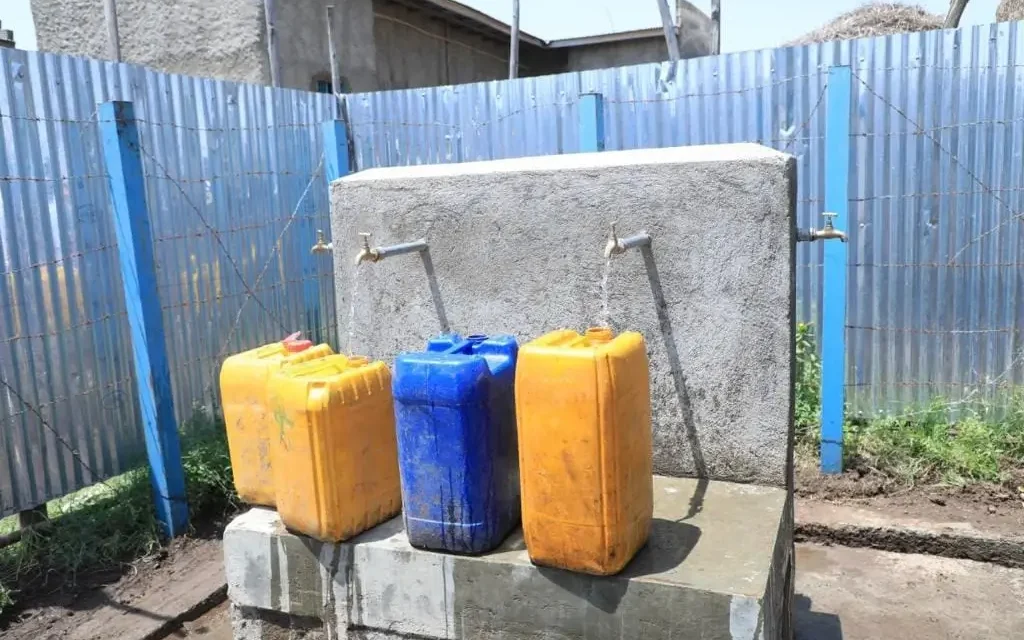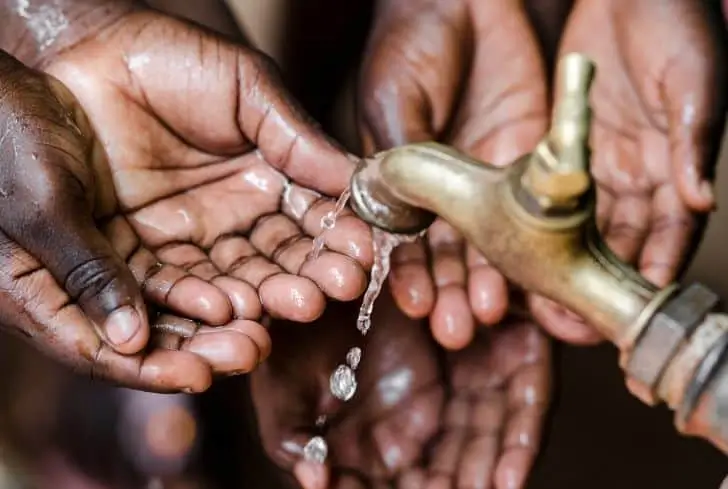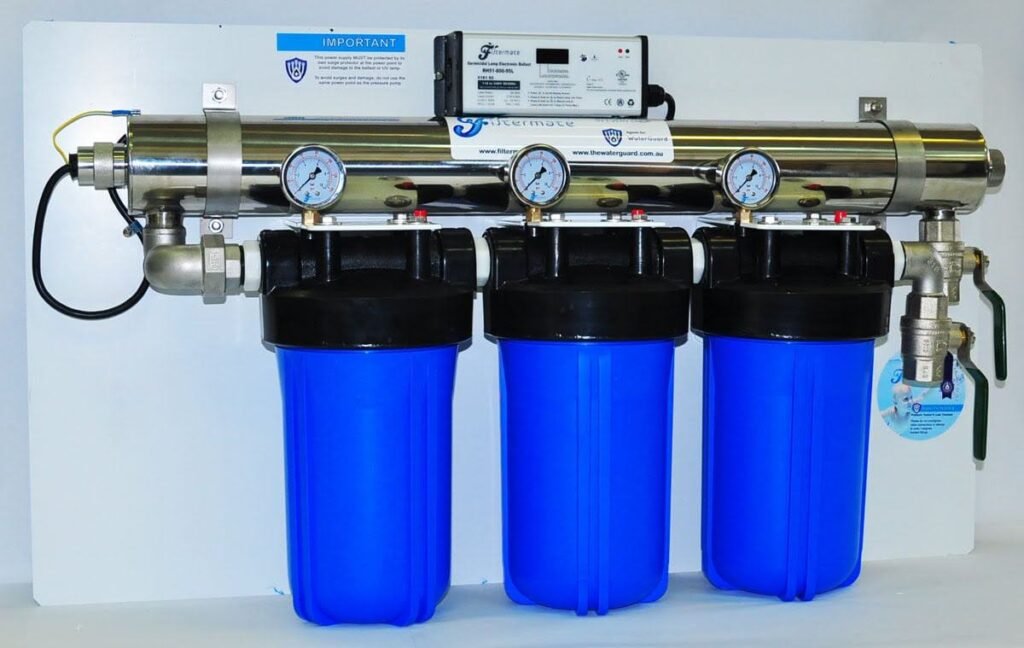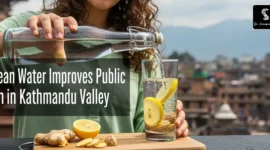
Understanding the Water Scarcity of Kathmandu Valley: Causes and Solutions
- Water Supply
- May 16, 2025

Table of Contents
Kathmandu Valley, with over three million people, is experiencing a critical water shortage. Rushed urbanization, widespread concrete growth, and dwindling springs have collectively contributed to placing demand far in excess of sustainable supply.
Previously, the network of stone spouts and natural springs met people’s requirements. Presently, those sources have declined by about 40 percent, with people relying on tanker trucks or shallow wells that dry up soon. During dry seasons, pressure drops so low that little or no water reaches second‐story apartments. In the lower-income neighbourhoods, people wait in line for hours at public spigots or trek up hills to pull a bucket from spouts of ancient age. Discover how water scarcity in Kathmandu affects you so that you can take action to solve the problem.
This crisis is not only an annoyance; it is posing a threat to public health, economic production, and social fabric. Schools need to cancel classes, hospitals scour for water to sterilize instruments, and small businesses lose working hours. Valley edge farmers wait over parched crops in the scorching sun. What was once the sure-footed business of agriculture has become a gamble.
But solutions exist. From conventional community rainwater catchment to cutting-edge potable water systems, a range of solutions can relieve the pressure. By looking into causes, impacts, and remedies, we hope that this article will provide every resident with knowledge and options. Together, we can weather seasonal shortfalls and engineer a water-secure future for the Kathmandu Valley.
Historical Trends of Water Scarcity in Kathmandu
For centuries, Kathmandu Valley existed on freshwater springs erupting out of hillsides and irrigating communal ponds. Stone spouts, locally known as dhunge dharas, provided daily water for drinking, cooking, and ritual baths. The older generation recollects that there used to be at least three working spouts in every neighbourhood, and hence it was accessible to everyone.
After the 1950s, however, urbanization gained momentum. The population rose from half a million to more than three million in seventy years. With every new home, the need for piped water increased. Key periods of drought laid bare vulnerabilities in the system. Water supply plummeted by 60 percent when the dry season hit and peak demand touched its yearly high. Infrequent tanker runs and rationing had only Band-Aid-style effectiveness.
Community initiatives peaked in the early 2000s. Local committees restored old ponds, and NGOs installed low-cost rainwater harvesting systems. These steps reduced the use of tanker water by up to 30 percent in pilot areas. Yet, as the city kept growing, illegal settlements emerged on fragile slopes, further disrupting natural recharge zones.
Today’s Kathmandu history reveals an important lesson: without any organized planning that respects both tradition and high-tech engineering, water shortage can only get worse.
Major Reasons for Water Shortage in Kathmandu Today

Modern-day water shortages in Kathmandu are the product of a complex array of interrelated causes. One, excessive extraction of groundwater has reduced levels of water as much as 10 meters in different sections of the valley. Unregulated drilling of hundreds of wells draws aquifers faster than they recharge them, draining springs.
Secondly, aging and leaking infrastructure waste around 35–40 percent of treated water along the way to consumers. Third, rapid urbanization has overrun vast areas of porous land with concrete and asphalt. Rain that previously recharged underground aquifers now runs off into drains and rivers, along with contaminants. This not only reduces natural recharge but also increases flood risk during monsoons.
Fourth, climatic uncertainty amplifies these concerns. Anomalous trends of monsoon precipitation mean short, intense showers, followed by long dry seasons in the territories. Such uncertainty makes reservoir management more difficult and raises the reliance on groundwater.
Finally, issues of governance—like diluted accountability between agencies, uneven compliance with drilling codes, and weak community participation—enhance technical challenges. Addressing these root causes requires collective action: upholding well-drilling permits, spending on pipeline upgrading, promoting porous urban design, and forging public–private partnerships for efficient service delivery.
Effect of Scarcity of Water on Public Health in Kathmandu
Lack of clean water in Kathmandu has severe health implications. When city water sources are unavailable, residents resort to untested alternatives—open wells, occasional tankers, or untreated river water. These alternatives consistently include diseases such as diarrhoea and cholera.
Medical records show outbreaks of waterborne illnesses during the dry season when contamination risk is highest. As many as 30 percent more cases of diarrhea, typhoid, and dysentery are seen in hospitals between February and May. Children under the age of five years are most at risk, with malnutrition and dehydration worsening disease severity.
In dental clinics and hospitals, the unavailability of good, sterilization-grade water forces improvisation. Reusable instruments are sometimes washed in suboptimal water, raising the risk of hospital-acquired infection. School attendance is also boosted when children fall ill or have to help their families fetch water.
Role of Climate Change in Kathmandu’s Water Crisis

Climate change is rapidly altering Kathmandu Valley’s water dynamics. Recent meteorological analyses reveal an approximate 12 percent decline in annual spring discharge since 2000. Meanwhile, dwindling Himalayan glaciers affect the long-term reliability of river flows.
Monsoon rains have become increasingly erratic, with intense precipitation followed by extended dry spells. These phenomena interfere with traditional water management systems, which were established based on predictable seasonal cycles. Flash flooding overwhelms drainage systems, erodes riverbanks, and contaminates available water sources. Conversely, extended dry spells strain reservoirs and compel families to over-pump wells.
The first to feel these impacts are rural farmers. Planting windows have been reduced by two to three weeks on average, compromising staple crops like rice and maize. Local weather stations now issue frequent “no-farm” alerts, advising farmers to wait for rains to settle before sowing.
Urban planners are also keeping watch. Reservoir managers struggle to maintain levels that can serve as a drought buffer without risking flood collapse. Projected 1.5–2 °C temperature increases by 2030 may add to evaporation losses, contributing to scarcity.
Efforts at adaptation are being carried out. Rainwater capture is being included in new construction codes. Green infrastructure such as permeable pavement, bioswales, and urban wetlands retard storm runoff and foster infiltration. Smarter sensors and analytics manage reservoir discharges and monitor groundwater in real-time. Complemented by cost-saving purification like Hydrogen Boost Technology in innovative ionizers, such measures can empower Kathmandu to weather climate extremes and preserve its precious water resources.
Current Interventions and Government Measures for Clean Water in Kathmandu
Significant public interventions are headed by the Department of Water Supply & Sewerage. The six-stage Melamchi Water Supply Project, commissioned in stages since 2007, has added around 170 MLD (million litres per day) of capacity.
At the same time, bulk water meters are being installed at points of intake to curb non-revenue water. The meters provide data that aids in the identification and repair of leaks more efficiently. Rusty pipe replacement is still in progress, though budgetary constraints and poor terrain slow down the process.
A new building code mandating storage tank installation in multi-storey buildings exists. Additionally, DWSS has proposed a public-private partnership model for funding small-scale treatment plants in informal settlements.
Despite these initiatives, enforcement remains an issue. Periphery illegal drilling continues, and the majority of subsidized rainwater systems fail because they are not maintained. Local technician training initiatives are being expanded to address this deficiency.
On the advocacy front, public campaigns promote water-conserving habits such as shorter showers, the reuse of greywater for gardening, and leak detection. Citizen science that is volunteer-led, where citizens document spring flow measurements, is guiding micro-planning activities. Through building institutional capacity and incorporating participatory community input, these complementary measures aim to deliver truly clean water in Kathmandu to all its citizens.
Community-Driven Potable Water Solutions in Kathmandu
In communities throughout the valley, community innovators are leading the way with drinkable water solutions that combine local knowledge with pragmatic engineering. Roof-catchment rainwater systems, constructed from locally available gutters and storage drums, harvest monsoon rains for use during the dry season. Most installations cost less than NPR 30,000 but provide a family of five with up to 20 litres per person per day.
Sustaining biosand filters that consist of stacked sand and gravel constructed in reused barrels can remove bacteria and protozoa by up to 99 percent. The women’s cooperatives serving them only need to every now and then “swirl clean” to restore flow. They are inexpensive and uncomplicated and are therefore suited to peri-urban neighbourhoods.
Community savings groups pool funds to purchase community membrane or UV units, splitting the cost of operation and training members in basic maintenance.
Pilot projects in cities have produced impressive results: cases of diarrheal disease reduced by over 50 percent when the residents adopted double rainwater and biosand practices. Local schools, supported by NGOs, installed gravity-fed filters to serve 200 students each day, in effect eliminating waterborne absences.
These bottom-up approaches not only address short-term shortages but also build local ownership and capacity development. Where government services lag, community-based approaches offer long-term access to clean drinking water, reducing dependency on tanker vendors and bottled water.
Innovative Technologies Combating Water Scarcity in Kathmandu

New technologies are complementing people’s efforts. Explore our water filtration and purification solutions to understand the new technologies in this area. UV decontamination chambers kill 99.99 percent of the bacteria without the use of chemicals. Smart IoT sensors, installed on main pipelines, track pressure drops linked to leaks, enabling rapid repairs. Solar-powered desalination plants, though still costly, promise to bring succour to growing peri-urban settlements soon.
Among the top innovations is the Chanson Alkaline Water Ionizer. As the USA No. 1 Brand with US FDA & Medical Grade Approved qualifications, it uses Hydrogen Boost Technology to infuse dissolved hydrogen into water and change pH between 2.5 and 11.5. The alkaline water has a greater pH than regular drinking water, offering antioxidant properties and enabling enhanced hydration.
Chanson machines use 30–50 percent less power than any other ionizers—a major advantage in light of Nepal’s constant power outages. They operate without adding chemicals, thereby being 100 percent safe and 100 percent natural. Every unit is checked exhaustively at nine levels with a 32-point quality check before shipping, ensuring flawless functioning.
The installation is easy: a countertop module is simply plugged into the kitchen faucet and runs on common voltage. Upkeep involves mere cartridge replacements half-yearly. Modular add-ons permit users to pick features such as pre-filtration, UV boost, or mineral re-infusion.
By plugging these new machines into existing supply grids and rainwater harvesting setups, Kathmandu can build a multi-layered shield against water scarcity, wedging resilience, convenience, and health benefits into a single product.
Alkalized Water Ionization Benefits for Clean Water in Kathmandu
Alkalized water is not a trend; it’s a scientifically proven way to increase daily hydration. Several studies have shown that water with a pH value greater than 7.0 can help counteract acidity in the body, support digestive health, and act as a mild antioxidant.
In Kathmandu, where the safety of tap water is uncertain, using a US FDA & Medical Grade Approved Device like the Chanson ionizer provides double protection of security and health. There are fewer tummy issues and better energy levels for households after switching to ionized water.
Financially, the up-front investment in a Chanson unit returns itself in 12–18 months. Compared to recurring costs for bottled water—typically NPR 25–30 per litre—the lifetime cost per litre from an ionizer is a small fraction of that. Less plastic waste and lower fuel bills for boiling contribute economic and environmental advantages.
Clinics and schools operating Chanson units report smoother functioning: constant access to clean water translates to fewer supply interruptions and less maintenance and troubleshooting equipment. Caregivers praise the simple, plug-and-play design requiring no advanced technical knowledge.
With low energy demands and no chemical additives, these machines are in alignment with Kathmandu’s broader sustainability goals. They augment municipal supply, supplement community harvesting systems, and bring clean water to Kathmandu where and when it’s most needed.
Conclusion: Sustainable Solutions to Address Water Scarcity in Kathmandu
Kathmandu’s water issues are multifaceted—established on centuries of abuse, infrastructure collapse, and a changing climate. Yet solutions ancient and modern hold a promising path forward. Rainwater harvesting at the household level and biosand filtration provide lifesaving bridging solutions during the dry months. Government projects like Melamchi deliver mass capacity, but must be coupled with enhanced leak control and better enforcement of drilling regulations.
You can get clean, safe water with our dependable equipment. Innovations such as the Chanson Best Alkalized Water Machine—the gold standard alkaline water ionizer with Chanson—added robust supplementation to the public supply. With Hydrogen Boost Technology and a rigorous 32-point examination, these health-grade units enable families, clinics, and schools to have unending access to potable, health-enhancing water.
By policy reforms, civic activism, and targeted technology adoption, Kathmandu can rewrite its water narrative from scarcity to sustainability. Each saved drop, each fixed leak, and each added ionizer contributes to a resilient future. When these solutions are implemented by citizens in small and large ways, the valley can thrive again on stable, secure water for all.
Frequently Asked Questions
1. What drives water scarcity in Kathmandu?
Over-pumping of groundwater, aging pipelines, rapid urban growth, and erratic rainfall are the main drivers.
2. How does the Chanson Alkaline Water Ionizer improve water quality?
It uses Hydrogen Boost Technology to adjust pH and add antioxidants, delivering safe, chemical-free drinking water.
3. Are rainwater harvesting systems cost-effective?
Yes—initial costs are modest, and captured rainwater can meet up to 30 percent of household needs in dry months.
4. What government projects support clean water in Kathmandu?
The Melamchi Water Supply Project and pipeline rehabilitation programs are key initiatives led by KUKL and DWSS.
5. Can community filters prevent waterborne diseases?
Absolutely—biosand and ceramic filters have reduced diarrheal cases by over 50 percent in pilot communities.
6. Is alkalized water safe for daily use?
Yes. Medical-grade ionizers like Chanson produce pH-balanced water without chemicals, making it safe and beneficial.
7. How can I contribute to solving water scarcity at home?
Fix leaks, collect rainwater, install efficient fixtures, and consider a certified ionizer for reliable, clean water.
Related Post

- 10 Jul 2025
- 0
- 0
How Clean Water Improves Public Health in Kathmandu Valley | 2025
In the Kathmandu Valley, access to clean and pure water is a growing public health concern. Although
Read More
